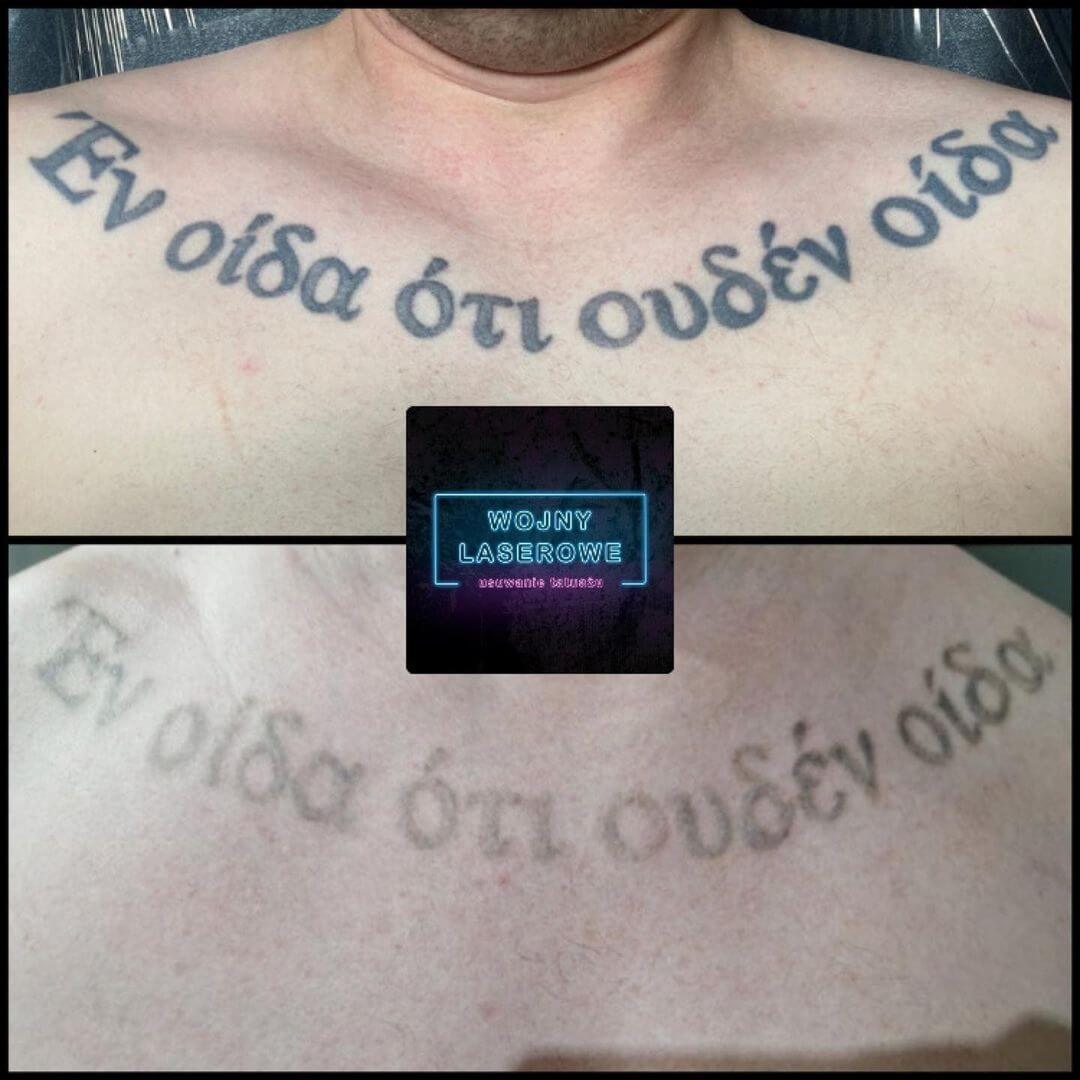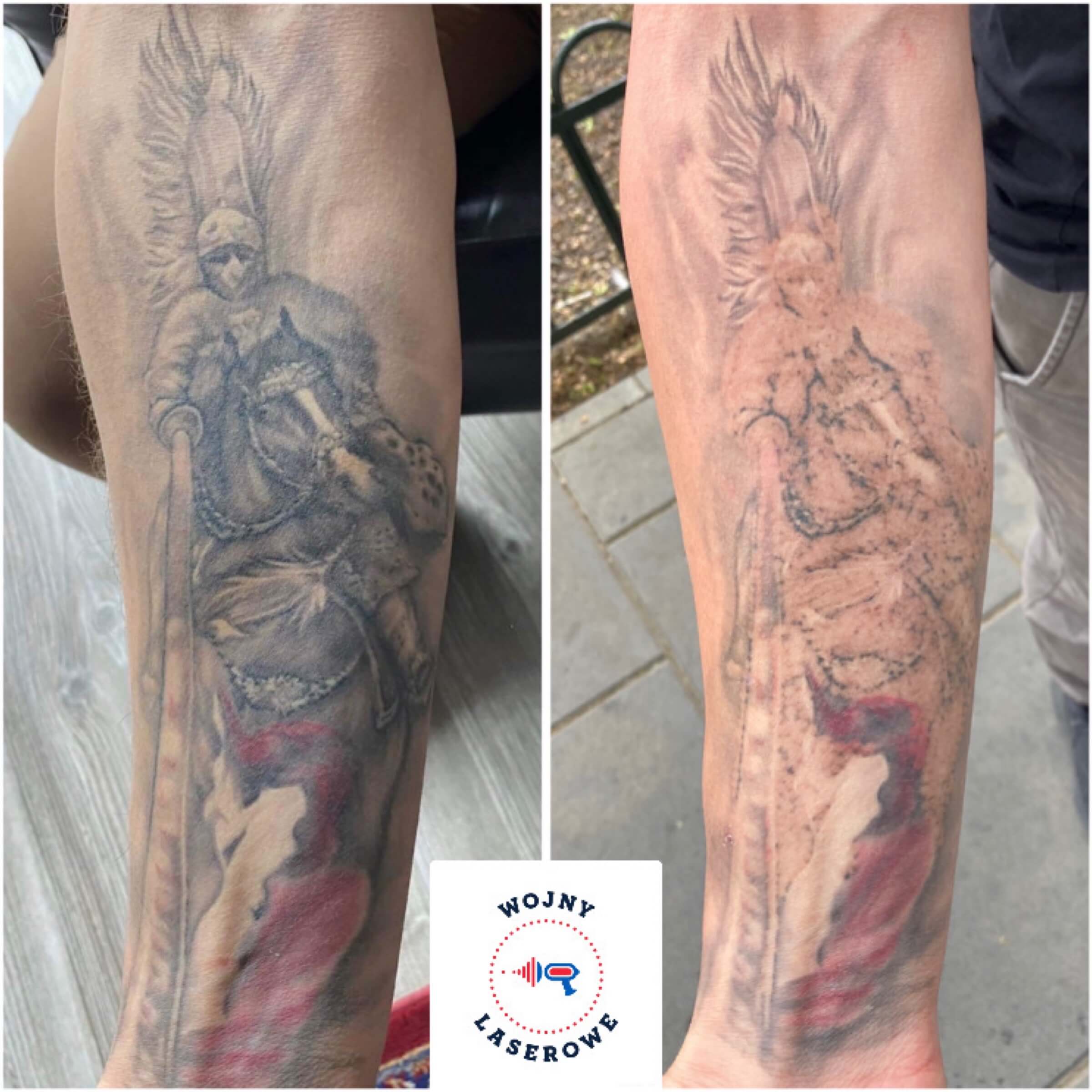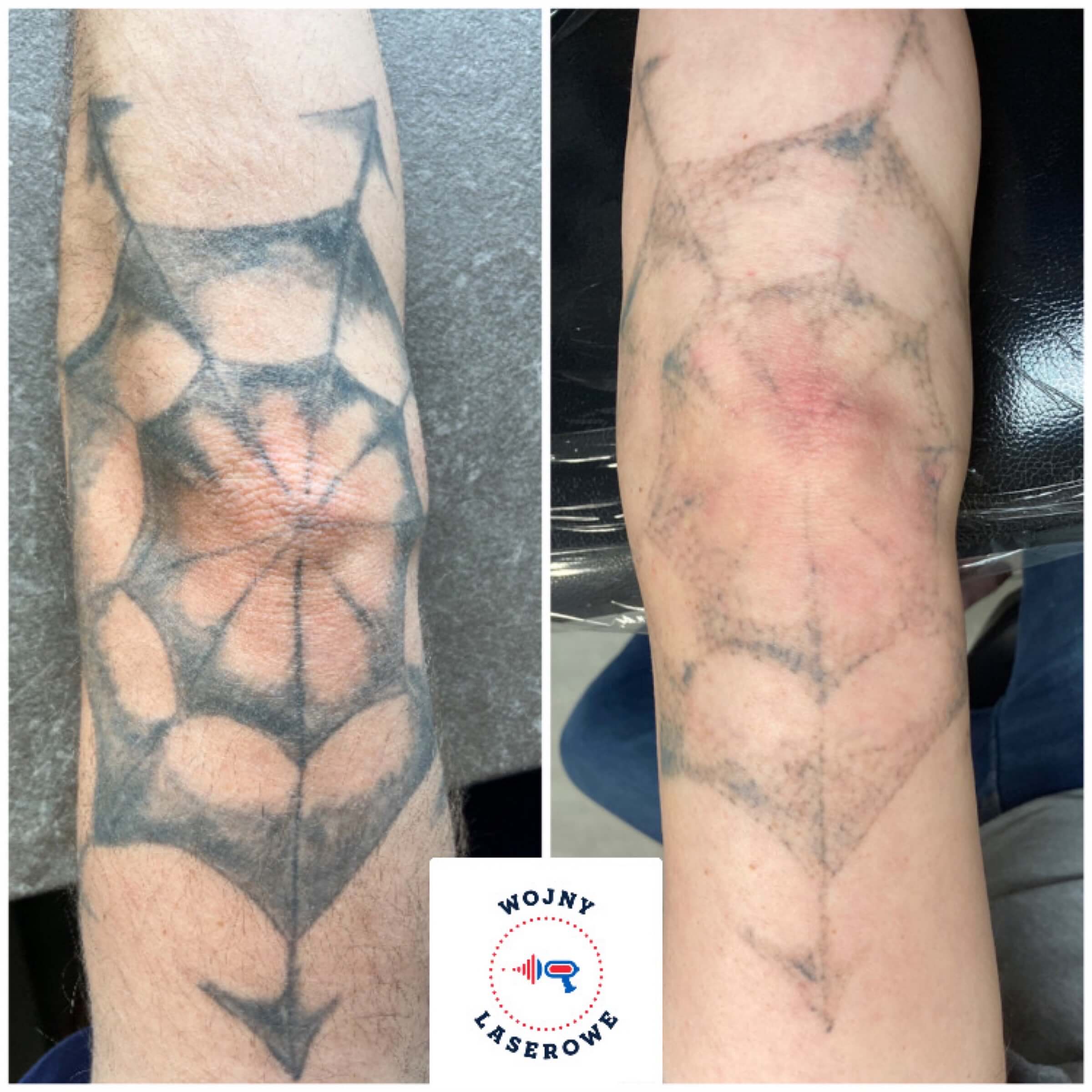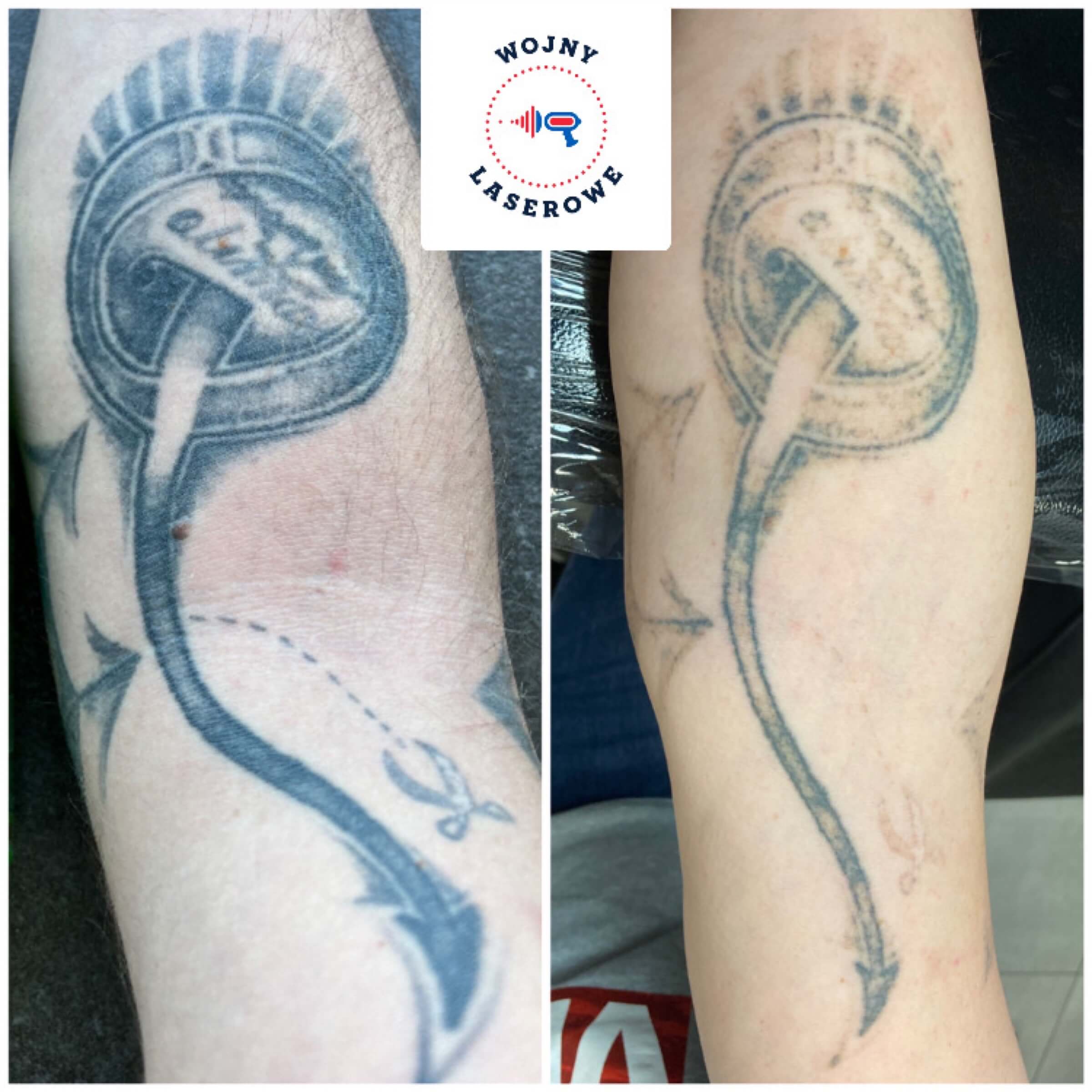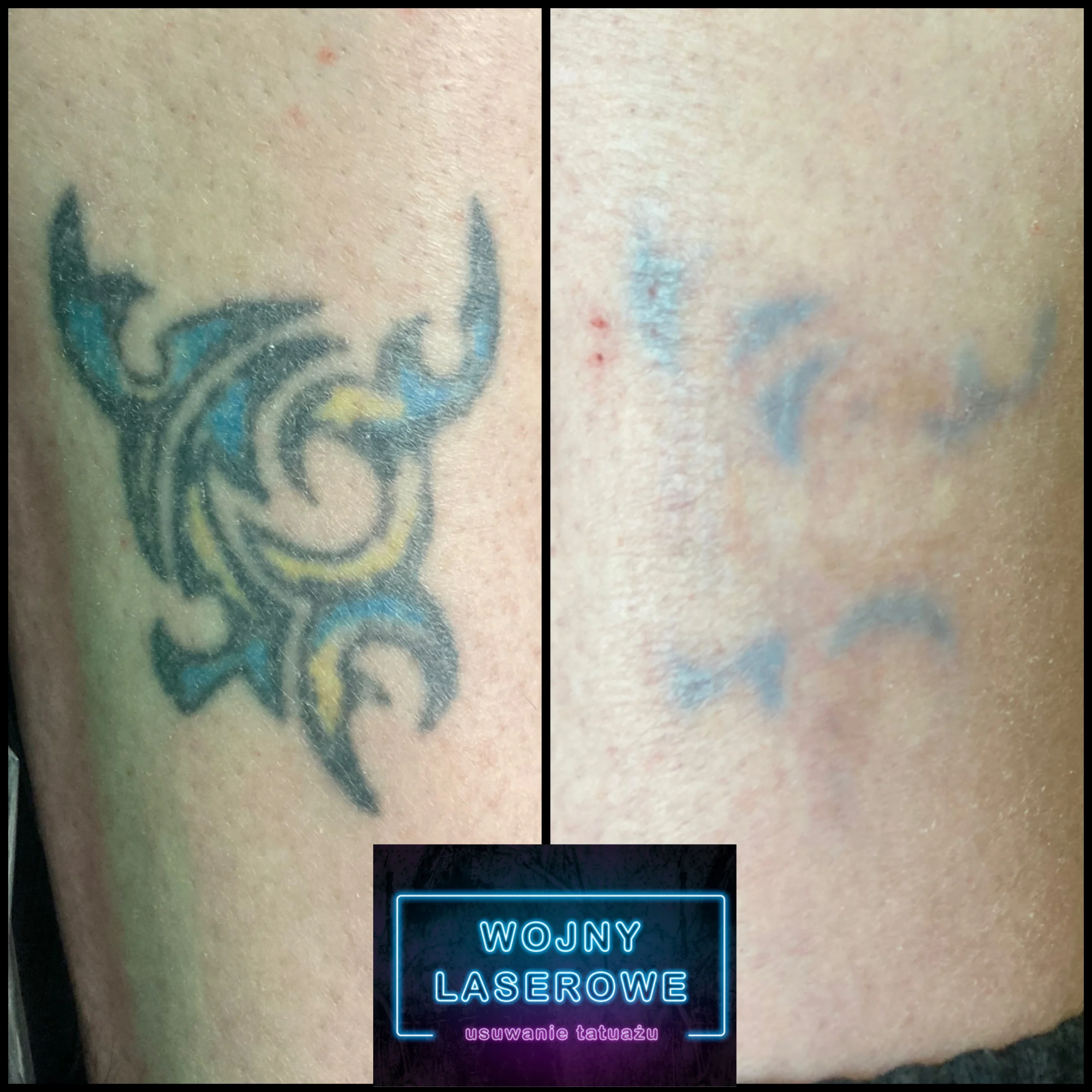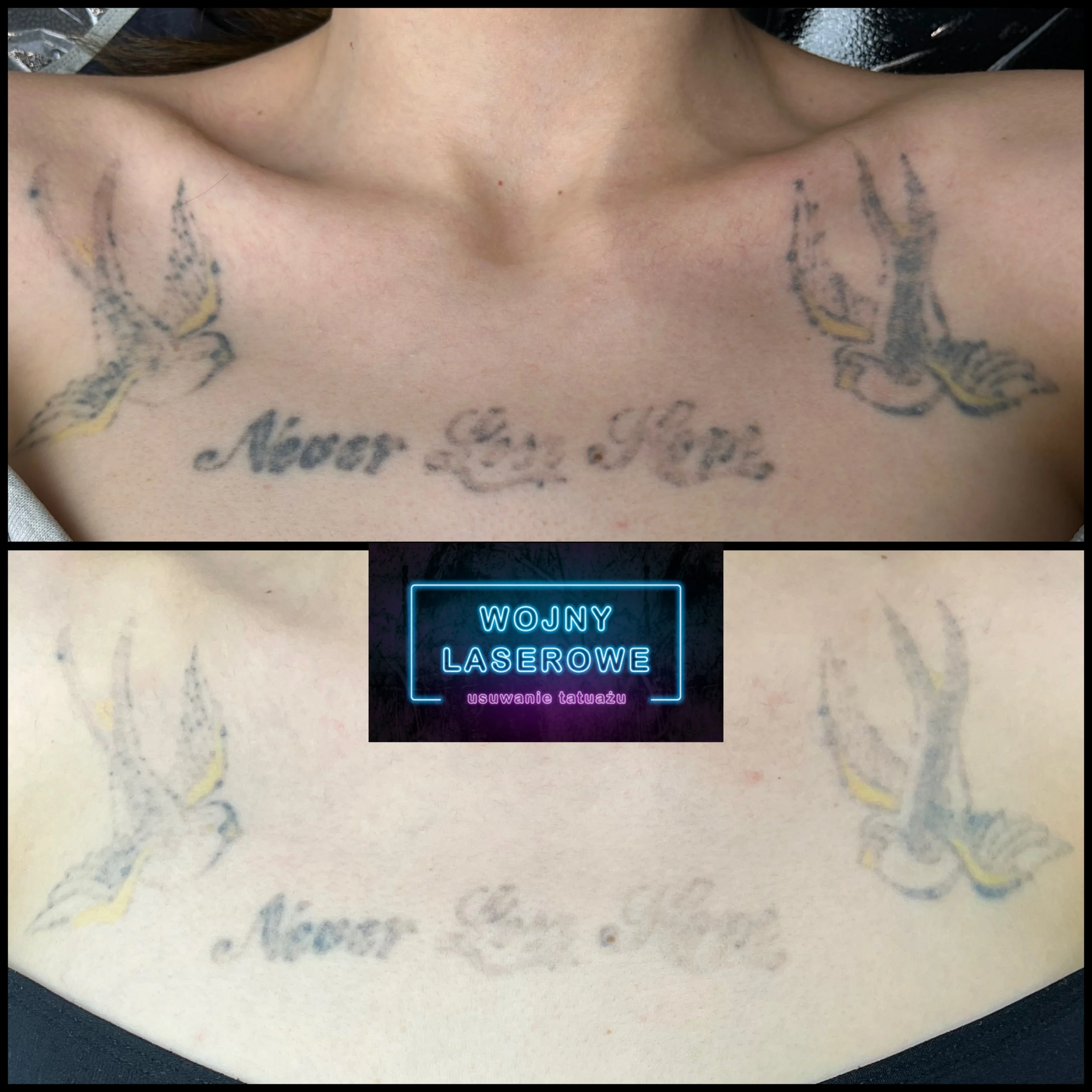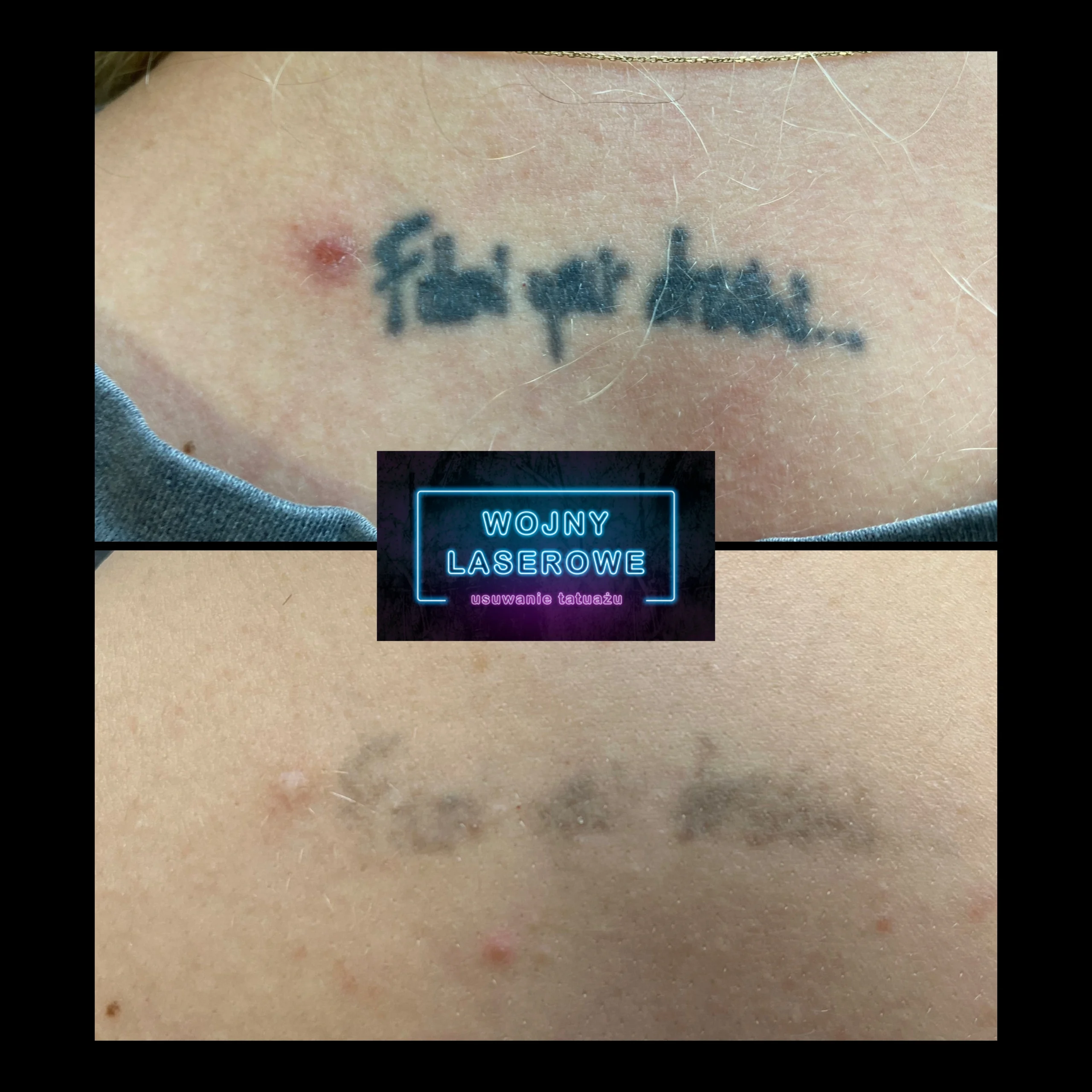
Piotr removes unwanted tattoos using very short nanosecond laser radiation with high power density.
Effectively fights tattoo buffs.
When he's not firing lasers, he's skateboarding or hanging out with turntables and electro beats.
LASER WARS
How is the laser tattoo removal procedure carried out?
We consult before qualifying for treatment. We pre-plan the number of sessions needed to achieve the desired effect. One session is not enough to remove a tattoo completely. Their number depends on the colour, the amount of pigment, its density, depth, the size of the tattoo, and the skin’s reaction to the laser.
Effects of the treatment
First of all, they depend on the quality and type of the pigment used, whether it has been evenly injected under the skin, and at what depth it is located. The laser we use usually removes amateur tattoos (often homemade, not of very good quality, characterized by shallow and uneven ink insertion) during 2-4 treatment sessions.
Professional tattoos (made by a professional, they are highly saturated with pigment, and injected deep into the skin) usually require more appointments at the studio. In their case, it is between 4 and 10 treatments. Treatments are repeated every 4-8 weeks after complete healing. At this time, the treated skin must not be tanned, as this can cause permanent hyperpigmentation.
Laser tattoo removal is an extremely effective method in the majority of cases. Complete removal requires multiple sessions. Each treatment results in approximately 20 percent fading of the tattoo if it is not in a scar. Depending on the color, different equipment is used.
The laser we use allows the permanent removal of a pigmented lesion, including, in particular, a tattoo. For the treatment to be successful, it is important to know the type of pigments used and the depth to which they have been injected. The deeper they are, the harder it is to get rid of them. The result starts to become visible gradually. The tattoo fades under the light of the laser. During the four-week interval between treatments, the molecules of laser-shattered pigment are systematically absorbed by the cells of the immune system. Over time, the pigment disappears completely.
The effect of laser radiation is felt by the patient like the pain of snapping a rubber band, but anesthesia methods are always used. This can be a cream or skin cooling.
What to expect after the treatment?
The mechanism of the laser is to heat the pigment located in the skin, thus destroying the cells in which the pigment is located. The fragmented pigment is absorbed by macrophages and the residue is moved upwards through the epidermis. During the following treatment sessions, the process is repeated until the client is satisfied with the results. The laser-treated area first turns white and then red after a few minutes, and swelling may also develop, which disappears spontaneously after 2-3 days. The swelling means that the pigment has been hit by the laser beam. The treatment is repeated after approximately 6-8 weeks. In the case of unprofessional tattoos or those previously removed using other methods, the treatment time becomes longer.
Make an appointment for a consultation on FACEBOOK or INSTAGRAM.


